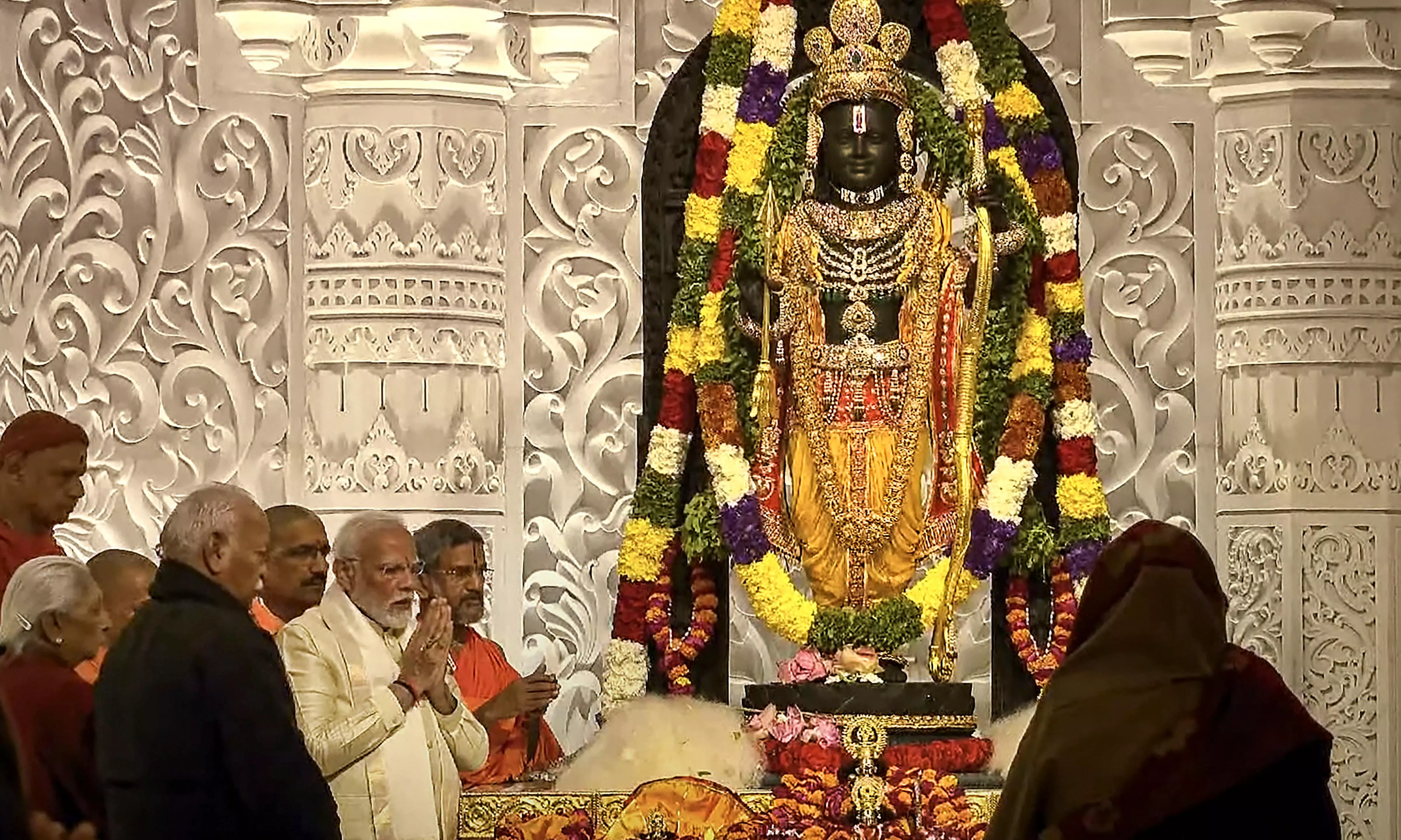
- Home
- India
- World
- Premium
- THE FEDERAL SPECIAL
- Analysis
- States
- Perspective
- Videos
- Sports
- Education
- Entertainment
- Elections
- Features
- Health
- Business
- Series
- In memoriam: Sheikh Mujibur Rahman
- Bishnoi's Men
- NEET TANGLE
- Economy Series
- Earth Day
- Kashmir’s Frozen Turbulence
- India@75
- The legend of Ramjanmabhoomi
- Liberalisation@30
- How to tame a dragon
- Celebrating biodiversity
- Farm Matters
- 50 days of solitude
- Bringing Migrants Home
- Budget 2020
- Jharkhand Votes
- The Federal Investigates
- The Federal Impact
- Vanishing Sand
- Gandhi @ 150
- Andhra Today
- Field report
- Operation Gulmarg
- Pandemic @1 Mn in India
- The Federal Year-End
- The Zero Year
- Science
- Brand studio
- Newsletter
- Elections 2024
- Events
- Home
- IndiaIndia
- World
- Analysis
- StatesStates
- PerspectivePerspective
- VideosVideos
- Sports
- Education
- Entertainment
- ElectionsElections
- Features
- Health
- BusinessBusiness
- Premium
- Loading...
Premium - Events

'By Ram Rajya I do not mean Hindu Raj...For me Rama and Rahim are one and the same deity,' said Gandhiji; RSS will hardly concur with him
In barely a week’s time, three big events have come to vie — or rather, compete with each other — for public attention. This may have a lingering effect, too. The events are the consecration of the Ram temple in Ayodhya, followed by Delhi’s annual Republic Day show, and finally, the martyrdom day of Mahatma Gandhi.
The first and the last have ended up in throwing up a debate over Ram Rajya, or its better kind that the republic should yearn for. More so since as towering a statesman as Gandhiji was among the ardent advocates of Ram Rajya throughout his life.
Indeed, Gandhiji’s views on Ram Rajya have once again assumed significance with the opening of the grand temple in Ayodhya.
Modi’s speech
But let the first thing come first — speaking soon after the January 22 consecration, Prime Minister Narendra Modi said, “Ram’s kingdom was established for thousands of years, i.e., Ram Rajya was established for thousands of years. When Ram came in the Treta Yuga (Divine Age), the establishment of Ram Rajya took place for thousands of years. For thousands of years, Ram continued to guide the world.”
Modi was euphoric in his praise for Ram and his Rajya and was keen to seize the moment of the inauguration of the lord’s shrine. Thus, he soon added, “On this occasion, the divine spirits present to bless us are witnessing us; how will we bid them farewell? No, certainly not. Today I feel with a virtuous heart that the wheel of time is turning. It is a happy coincidence that our generation has been chosen as the architect of a timeless path. The generations after a thousand years will remember our nation-building efforts today. Therefore, I say — this is the time, the right time. From today, from this sacred moment, we must lay the foundation for the next thousand years of Bharat.”
So, the eloquence was at its best so as to match the epochal event before a large, select, and distinguished gathering but this also signified depending more on the divine or the deity than devising the right course through the collective imagination of the country and its over a billion people.
Gandhi’s view of Ram Rajya
So, this is how Gandhiji’s views on Ram and the kind of kingdom or Rajya that he shaped and ruled come to mind. No less a person than RSS chief Mohan Bhagwat, who too spoke in Ayodhya on January 22 before Modi, cited Mahatma Gandhi’s message of togetherness and recalled the Father of the Nation’s warning against what have become today’s challenges by saying that Gandhiji had cautioned about the Earth having enough for everyone’s need but not for everyone’s greed.
Yet, Gandhiji not only said this but also embodied it. He was able to set an example all the time and the example that he followed was that of Ram as his staunch and steadfast disciple. So much so that when Mahatma’s life was cut short, on this day in 1948, he fell with just two words on his lips and these were “Hey Ram”. This is how Gandhi’s views on Ram or Ram Rajya deserve more attention than those of others.
Not 'Hindu Raj'
In Young India on September 19, 1929, Gandhiji wrote, “By Ramarajya I do not mean Hindu Raj. I mean by Ramarajya Divine Raj, the Kingdom of God. For me Rama and Rahim are one and the same deity. I acknowledge no other God but the one God of truth and righteousness.
“Whether Rama of my imagination ever lived or not on this earth, the ancient ideal of Ramarajya is undoubtedly one of true democracy in which the meanest citizen could be sure of swift justice without an elaborate and costly procedure. Even the dog is described by the poet (who lauds Ram) to have received justice under Ramarajya.”
On another occasion, the Mahatma said, “Ramarajya of my dream ensures equal rights alike of prince and pauper.”
And, on June 1, 1947, he wrote in Harijan, “There can be no Ramarajya in the present state of iniquitous inequalities in which a few roll in riches and the masses do not get even enough to eat … my opposition to the Socialists and other consists in attacking violence as a means of effecting any lasting reform.”
Gandhi’s diminishing effect
Sadly, neither hunger nor violence has left since Gandhiji laid down his life seeking togetherness among warring sections of Indians, and sectarianism is again on the rise. So, once seen from Gandhi’s lens, the coming of Ram Rajya is hard to visualise anytime soon. No cursory quotes from Gandhi’s life and works can help this even if these bring some legitimacy to today’s politics. Gandhi is today having a diminishing effect on society and politics.
This is so despite the fact that on May 5, 1946, Gandhi wrote in Harijan, “Friends have repeatedly challenged me to define independence. At the risk of repetition, I must say that independence of my dream means Ramarajya i.e., the Kingdom of God on earth. I do not know it will be like in Heaven. I have no desire to know the distant scene. If the present is attractive enough, the future cannot be very unlike.”
Sangh’s aversion for Gandhi
Thus, the Sangh that holds power today does not appear to have the same view on Ram Rajya as that of Gandhi though it does draw a line or two from Gandhi to make its points or ideas more palatable.
This is not a new phenomenon but dates back to Gandhi’s time and thereafter. A small book, The End Of A Dream An Inside View of RSS by Hemendra Nath Pandit shows this. It was published way back in 1950 by Calcutta Book House and republished in 1974 by All India Sampradayikta Virodhi Committee, New Delhi. Pandit was an RSS Pracharak who wrote the book after quitting the organisation.
At one point he writes, “Mahatma Gandhi’s favourite Ram Dhun has undergone a change in the RSS. The line Ishwar Allah Tera Nam is considered objectionable and the Sangh therefore has its own reading as Keshava Madhava Tera Nam. Keshava is the name of Hedgewar, the founder of RSS (and Madhava that of Golwalkar).”
Incidentally, Keshava and Madhava are also names that refer to lord Krishna and, thus, these could easily be accepted by the RSS activists. Pandit was referring in his book to the hymn Raghupati Raghava Raja Ram… The book gives more points to illustrate Sangh’s aversion for Gandhi.
Sadly, this is not confined to Gandhiji as a person alone but also extends to his views, including those on Ram Rajya, and it does not seem to have been shed by the Sangh and its affiliates so far.
(The Federal seeks to present views and opinions from all sides of the spectrum. The information, ideas or opinions in the articles are of the author and do not necessarily reflect the views of The Federal)


